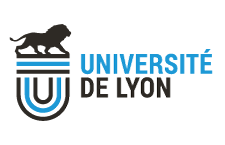Unités de recherche
Partenaire 02: Institut de physique nucléaire de Lyon
Physique
- Adresse :
- Institut de Physique Nucléaire de Lyon
Groupe des Collisions Atomiques dans les Solides - Physique Appliquée à la Biologie
CAS-PHABIO
4 rue E. Fermi
69622 Villeurbanne - Sur Internet :
- https://www.ipnl.in2p3.fr/
- Tutelle :
- UCBL - CNRS
Organisation
Représentant: Denis DAUVERGNE
“CAS-PHABIO” team (Atomic Collisions in Solids – Physics Applied to Biology) (Project Leader: Denis Dauvergne) is now leading this research on cancer treatment by ion beams, taking profit of its experience in particle-matter interaction. The activities of the group are twofold:
1. the development of novel instruments for online-control of dose deposition by means of secondary radiation issued from nuclear fragmentation, namely : prompt-gamma SPECT (for which a patent was deposited in 2008), online TEP, secondary proton-vertex interaction reconstruction, and a derivate project for a proton radiography system. The associated modelling of detectors requires the acquisition and evaluation of basic nuclear data. This activity is performed in close collaboration with CREATIS, LPC-Clermont and LIRIS;
2. the development of simulations, models and instruments: i) to describe the first stages induced by the irradiation of biological materials, including the physics and physic-chemical processes; ii) to calculate the biological dose based on micro/nanodosimetry and in collaboration with LPC-Clermont and LIRIS, to be included in the treatment planning systems used in hadrontherapy and iii) to perform radiobiological experiments and analysis of the measured data in collaboration with the LRCM team.
Collaborations with other partners of PRIMES have been long achieved and leaded to several projects: the Programme Regional de Recherche en Hadronthérapie, supported by two-successive Contrats de Projet Etat Région from 2004 to 2013; the ANR SIMCA2 (2007-2010); the ANR Gamhadron (2009-2013); the ANR RADICO (2007-2010); the INCA project (thesis financing 2007-2010); the INCA-AVIESAN QUAPIVI and ProTom projects (2012-2014); the FP7-collaborative projects ULICE (2009-2012) and ENVISION project (2010-2013) both driven by the ENLIGHT++ European framework; and the Marie Curie Initial Training network ENTERVISION (2011-2014), driven by ENLIGHT++.
Axe(s) de recherche
The “Institut de Physique Nucléaire de Lyon” (UMR 5822) is a joint research unit from the “Université Claude Bernard Lyon 1” and the “Institut National de Physique Nucléaire and Physique des Particules” (IN2P3) of CNRS. The activities of IPNL are oriented toward experimental fundamental physics, with a large contribution in particle, astroparticle, nuclear and ion-matter interaction physics, but the laboratory is also strongly engaged in environmental and health applications. IPNL gathers about 200 persons, half of them being researchers, post-docs and students, and the other half engineers, technicians and administratives. Most of the fundamental and applied research and related developments of IPNL are involved in the LIO Labex, and a small fraction dedicated to nanoscience is represented in the IMUST Labex. Researchers from IPNL were pioneering members of the ETOILE hadrontherapy project in Lyon since 1997. They contributed to both the construction project of the clinical centre and the organisation of the associated multi-disciplinary research.



 Accueil
Accueil PRES LYON
PRES LYON Nous contacter
Nous contacter Archives
Archives WebAdmin
WebAdmin